Key Takeaways
AI table reservation apps are revolutionizing the dining experience, offering personalized recommendations, predictive seating, and voice-assisted bookings.
Knowing how to build an AI table reservation app? Allows careful planning, including market research, defining core features, selecting the right tech stack, and designing an intuitive UI/UX.
Integration of AI not only enhances user experience but also optimizes restaurant operations and boosts efficiency.
Understanding the cost to create a table reservation app and long-term monetization strategies ensures profitability and scalability.
For entrepreneurs and restaurant owners looking to transform dining experiences, a well-planned AI reservation app is the key to standing out in 2025’s competitive market.
Partnering with experts like JPLoft simplifies table reservation app development, testing, and post-launch support.
In 2025, dining isn’t just about food; it’s about experiences. Imagine booking a table instantly through an app that not only finds the perfect spot but also personalizes your dining preferences using AI.
AI table reservation apps are transforming how restaurants and customers interact, making reservations seamless, efficient, and intelligent. For anyone exploring how to build a table reservation app, this is the right time to innovate.
With technology evolving rapidly, restaurant owners and entrepreneurs have a golden opportunity to tap into this growing market.
Whether it’s for predictive seating, AI-driven suggestions, or last-minute bookings, a smart table reservation app can elevate both operational efficiency and customer satisfaction.
This guide to table reservation app creation will walk you through everything you need to create an AI table reservation app from scratch in 2025.
Understanding Table Reservation Apps
A table reservation app is a digital solution that lets customers book tables at restaurants instantly, without waiting on calls or emails. These apps streamline operations for restaurant owners, reduce no-shows, and enhance the overall dining experience.
In recent years, the demand for such apps has surged, with the global online food delivery and reservation market expected to reach billions by 2025.
-
According to a 2024 survey, over 60% of diners prefer using apps to book tables rather than calling the restaurant directly.
-
A review platform survey also found that 45% of consumers in both the US and Canada prefer using mobile reservation apps to book tables.
-
65% of diners surveyed go directly to the restaurant’s website and use whichever reservation option they have available.
-
According to a survey by Ask Your Target Market, 47% of diners prefer online platforms for making reservations rather than calling the restaurant directly.
For entrepreneurs wondering how to develop a restaurant app, understanding market trends is key. From casual diners to fine-dining enthusiasts, these apps cater to a diverse audience. Additionally, keeping track of booking patterns and customer preferences through analytics empowers restaurants to provide tailored experiences.
But, how does a table reservation app work? Let’s get ahead to the following section to learn the same.
How Does a Table Reservation App Work?
A table reservation app simplifies the booking process for both customers and restaurant staff. Here’s a step-by-step look at how it works:
Step 1: User Registration and Profile Setup
Customers sign up using email, phone, or social logins. Profiles store preferences, favorite cuisines, and past bookings, allowing restaurants to offer personalized recommendations. This step ensures a seamless experience and sets the stage for AI-driven suggestions.
Step 2: Real-Time Table Availability
The app connects directly to a restaurant’s booking system, showing available time slots and table options. Users can instantly see which tables are free, helping reduce no-shows and maximize restaurant capacity. This functionality demonstrates why the best restaurant apps thrive in user engagement and retention.
Step 3: Booking and Confirmation
Customers select a table and confirm their reservation. The app sends instant notifications via email, SMS, or push alerts. Some advanced apps even provide reminders and allow modifications, enhancing convenience and reliability. The cost to build a restaurant reservation app like Opentable is influenced by these real-time features.
Step 4: Integration with Restaurant Management Systems
Backend systems handle table allocation, staff notifications, and reservation analytics. This integration allows restaurants to monitor occupancy, predict peak hours, and optimize staff allocation. Restaurant app development challenges like system compatibility are crucial considerations at this stage. All in all, it is a must for any serious table reservation app development guide.
Step 5: Analytics and Feedback
Post-dining feedback and usage analytics help restaurants understand customer behavior and improve services. Many modern apps now use AI-powered insights to predict customer preferences and streamline operations, enabling restaurants to deliver more personalized dining experiences.
This flow highlights exactly how to make a table reservation app that is both customer-friendly and operationally efficient.
Why Create a Table Reservation App in 2025?
With evolving customer expectations and the rapid adoption of AI, 2025 is the ideal time for entrepreneurs and restaurant owners to step into the digital dining market. Here’s why building a reservation app makes sense:
► Rising Demand for Digital Dining Solutions
Customers now expect instant access to services. From ordering food to reserving a table, convenience is a top priority.
By understanding how to create a table reservation app, businesses can cater to tech-savvy customers who prefer apps over traditional booking methods.
► Competitive Advantage for Restaurants
Restaurants that integrate technology stand out in a crowded market. An app helps automate bookings, reduce wait times, and boost efficiency.
Those who make a table reservation app are not just adopting technology; they’re securing a long-term competitive edge.
► Enhanced User Experience with AI
AI brings personalization through predictive suggestions, voice-enabled reservations, and real-time updates.
As top restaurant app features evolve, AI ensures a smooth customer journey that keeps diners coming back.
► Revenue Opportunities and Market Growth
A smart app doesn’t just serve customers, it drives profits. Integrating loyalty programs, premium subscriptions, and partner promotions can unlock new revenue streams.
Emerging AI in restaurant apps has made it possible to upsell smartly and maximize revenue per customer.
It won’t be wrong to say that entrepreneurs can develop a free table reservation app with ads or subscriptions to monetize smartly.
► Exploring New Restaurant Business Models
Entrepreneurs can innovate with niche apps, catering to specific cuisines, local dining scenes, or special events.
New restaurant app ideas are fueling growth in the dining sector, encouraging more investors and startups to participate.
► Sustainable Growth Through Monetization
Building an app isn’t just about technology; it’s about long-term sustainability.
Understanding effective monetization strategies, such as in-app ads, featured listings, or premium booking slots, helps ensure your app generates consistent revenue.
If you know how to build an AI table reservation app in 2025, you can design it to maximize profitability while delivering value to both restaurants and diners.
Must-Have Features in a Table Reservation App
To compete in 2025, a table reservation app must deliver functionality that balances convenience for users and efficiency for restaurants.
Here are the must-have features to create a table reservation app that users trust.
1. Seamless User Registration & Profile Management
Quick sign-ups through email, phone, or social accounts encourage adoption.
Profiles allow customers to store dining preferences, past reservations, and favorite restaurants, ensuring a personalized experience.
For businesses exploring how to develop a table reservation app, this is the foundation.
2. Real-Time Table Availability
Users should be able to see live availability and book instantly. Features like seat selection, dining slot filters, and instant confirmations are crucial.
Smooth integration with restaurant systems defines successful table reservation app development.
3. Smart Search & Filters
Filters by cuisine, pricing, ratings, and location help users find the perfect dining spot.
Effective table reservation app development emphasizes scalability and smooth navigation, ensuring users can quickly discover and book the right table without friction.
4. AI-Driven Recommendations
AI enhances user experience by suggesting restaurants based on preferences, history, and even current mood trends.
From predictive analytics to voice-enabled reservations, AI integration is shaping the future, making apps more intuitive, personalized, and responsive to individual diner needs.
5. Easy Payment & Billing Options
Offering multiple secure payment methods credit cards, wallets, or UPI, ensures customer trust. Adding split billing and loyalty credits can further enhance engagement.
6. Reservation Management Dashboard
For restaurant owners, dashboards simplify table allocations, monitor occupancy, and track cancellations.
Robust systems address many reasons why restaurant apps fail by ensuring smoother operations and minimizing errors.
7. Push Notifications & Reminders
Gentle reminders about upcoming bookings, promotions, or loyalty rewards keep users engaged and reduce no-shows.
Personalized notifications based on user preferences can also strengthen customer loyalty and encourage repeat visits.
8. Analytics & Reporting
Restaurants can gain valuable insights into peak hours, customer preferences, and revenue streams.
These insights guide how to improve services and explore how to build an app like TheFork as a successful example.
9. Customer Feedback System
Post-dining feedback helps restaurants continuously improve service quality and customer satisfaction.
For anyone who wants to build a custom table reservation app, these features are non-negotiable.
They not only create a smooth customer journey but also empower restaurants with data-driven decision-making for growth.
How to Build an AI Table Reservation App?
Building an AI table reservation app requires careful planning, the right technology, and strategic AI integration.
Here’s a step-by-step table reservation app development guide for entrepreneurs and restaurateurs aiming to create a seamless, intelligent dining experience.
Step 1: Market & Audience Research
Before writing a single line of code, research your target audience. Analyze customer preferences, dining habits, and competitor apps.
Understanding these patterns allows you to identify gaps in the market and opportunities to innovate. AI-driven analytics can reveal peak hours, popular cuisines, and user behavior trends.
This research ensures that your app aligns with real-world needs and helps you create an AI table reservation app that users truly value.
Step 2: Define Core Features
Next, list the app’s essential features. At minimum, include table booking, waitlist management, push notifications, and payment gateways.
AI-powered modules such as personalized restaurant suggestions, predictive seating, and smart reminders can elevate user experience.
Integrating these functionalities ensures your app stands out and positions you to build an AI table reservation app that outperforms traditional booking platforms.
Step 3: Choose the Right Tech Stack
Selecting the proper technology stack is crucial for scalability and smooth performance. Frontend options like React Native or Flutter allow cross-platform functionality.
Backend frameworks like Node.js or Django ensure reliability. For AI integration, leverage TensorFlow, PyTorch, or NLP libraries to power chatbots and recommendation engines.
Additionally, planning for ongoing support and updates is key. Consulting a mobile app maintenance services provider can prevent long-term pitfalls and let you develop a table reservation app seamlessly.
Step 4: Design an Intuitive UI/UX
User experience is everything. The app should be easy to navigate, with filters for cuisine, price, location, and ratings.
AI-enhanced features such as voice-enabled reservations and predictive search improve accessibility.
Focusing on a seamless UI/UX helps customers interact naturally with the app and encourages frequent usage.
This step also ensures compliance with modern restaurant app design standards.
Step 5: AI Integration & Automation
AI is the heart of the modern table reservation app. Predictive algorithms can suggest optimal dining times, allocate tables dynamically, and reduce wait times.
Voice and chat assistants powered by NLP make last-minute reservations effortless. Real-time analytics can inform restaurants about peak periods and customer preferences.
Incorporating these elements allows you to fully build an AI table reservation app with automation that enhances both operational efficiency and customer satisfaction.
Step 6: Development & Testing
With design and AI modules ready, begin agile development. Implement features incrementally and conduct continuous testing.
Use AI-assisted testing tools to identify performance bottlenecks, bugs, and compatibility issues across devices.
Comprehensive testing ensures reliability and aligns with industry standards, making it easier to compete with top-tier solutions like the best mobile app development services.
Step 7: Launch & Post-Launch Support
Finally, prepare for app launch on iOS and Android platforms. Collaborate with restaurant partners for promotions and user adoption.
Post-launch, focus on updates, bug fixes, and AI model retraining for predictive and personalized experiences.
Successful monetization strategies, inspired by on-demand app development company models, can include premium bookings, loyalty programs, and in-app advertisements.
Continuous iteration ensures your AI table reservation app remains competitive and customer-focused.
All in all, this structure answers the common query: How to build a table reservation app?
What’s the Cost to Build an AI Table Reservation App?
Understanding the cost to build an AI Table Reservation App is crucial when you are planning how to develop a table reservation app. This cost varies significantly and ranges between $15,000 and $1,00,000 depending on features, platform, AI integration, and development approach.
The total cost to develop a restaurant app can vary based on complexity, platforms, and technology used. Below is a detailed guide to help you estimate expenses realistically.
1] Basic AI Table Reservation App
A simple app with essential features like user registration, table booking, real-time availability, push notifications, and payment gateways is suitable for startups or MVPs.
-
Price Range: $15,000 – $25,000
-
Includes core AI modules, basic UI/UX, and single-platform support (iOS or Android). Engaging a UI/UX expert to guide how to develop an app like Yelp ensures a polished, user-friendly interface.
-
Ideal for testing market response before scaling.
The cost to create a Table Reservation App for a basic MVP can start from $15,000, depending on features and AI integration.
2] Mid-Level AI Table Reservation App
A more robust solution includes advanced AI features like personalized recommendations, predictive seating, voice booking, multi-platform support, and real-time updates.
-
Price Range: $30,000 – $50,000
-
Covers comprehensive design, AI modules, cross-platform compatibility, and moderate backend complexity.
-
Collaborating with a professional team on how to develop a restaurant finder app ensures smooth testing, compatibility, and reliable performance.
These features make mid-level apps a strong choice for restaurants aiming to balance innovation with cost-efficiency.
3] Advanced AI Table Reservation App
High-end apps with sophisticated AI, predictive analytics, voice-enabled reservations, multi-lingual support, and seamless third-party integrations fall under this category.
-
Price Range: $60,000 – $100,000+
-
Includes custom AI models, premium design, real-time analytics, and post-launch support.
-
Partnering with a trusted service provider to create an app or develop an AI app can streamline maintenance, updates, and AI retraining, ensuring your app remains fully functional and competitive.
Perfect for enterprises or restaurant chains seeking a fully scalable solution.
4] Additional Cost Considerations
-
AI & Machine Learning Integration: AI modules, including chatbots, predictive analytics, and voice recognition, require specialized development and are typically resource-intensive.
-
Maintenance & Updates: Post-launch restaurant app maintenance, server upkeep, and AI model retraining are ongoing expenses ($500 – $2,000/month).
-
Third-Party API Integration: Integration with payment gateways, POS systems, and mapping services may add $2,000 – $10,000.
-
Design & UI/UX: Adaptive layouts, AI-powered smart search, and voice features add $3,000 – $8,000.
-
Marketing & App Store Submission: Additional factors like marketing, app store fees, and third-party integrations may increase the overall budget.
Investing in AI ensures a better return on investment by improving reservations, customer satisfaction, and repeat business.
Factors like AI models, API integrations, and UI design affect the cost to create an AI table reservation app. Many startups first build an AI table reservation app at the MVP stage before scaling.
Consolidated Cost Table for AI Table Reservation App Development
|
App Type |
Key Features |
Price Range |
|
Basic |
User registration, table booking, real-time availability, push notifications, payment gateways |
$15,000 – $25,000 |
|
Mid-Level |
Advanced AI features, predictive seating, personalized recommendations, multi-platform support, voice booking |
$30,000 – $50,000 |
|
Advanced |
Sophisticated AI, predictive analytics, voice-enabled reservations, multi-lingual support, full integrations |
$60,000 – $100,000+ |
|
AI & Machine Learning |
Chatbots, predictive analytics, voice recognition |
Varies by complexity |
|
Maintenance & Updates |
Post-launch upkeep, AI retraining, bug fixes |
$500 – $2,000/month |
|
Third-Party API Integration |
Payment gateways, POS, mapping services |
$2,000 – $10,000 |
|
Design & UI/UX |
Adaptive layouts, AI-powered search, voice features |
$3,000 – $8,000 |
Monetization Strategies to Include in a Table Reservation App
A successful table reservation app isn’t just about great features it also needs a sustainable revenue model.
Below are proven restaurant app monetization strategies to ensure profitability while delivering value to users and restaurants alike:
► Commission on Reservations
Charge restaurants a small fee for every reservation confirmed through your platform.
This model is widely used by platforms like OpenTable and works well for both startups and established players.
A robust table reservation app development guide can help structure this model efficiently.
► Premium Listings & Promotions
Offer restaurants premium placement in search results or featured listings for a monthly fee.
These promotions give restaurants higher visibility and can significantly boost your app’s revenue.
Including this strategy makes it easier to create a table reservation app that benefits both users and restaurants.
► Subscription Plans for Restaurants
Introduce monthly or annual subscription plans where restaurants pay for access to advanced analytics, AI-driven insights, or priority bookings.
This not only adds recurring income but also enhances relationships with partner businesses.
► In-App Advertisements
Display relevant ads for food delivery services, beverage brands, or nearby experiences.
Ads must be subtle to avoid disrupting user experience. Partnering with an AI app development company ensures your ad placements feel contextual and user-friendly.
► Value-Added Services
Beyond bookings, offer loyalty programs, event reservations, or integrations with POS systems.
These additional features not only improve customer satisfaction but also create new opportunities for restaurants to enhance engagement and differentiate themselves in a competitive market.
► Data Insights & Analytics for Restaurants
Aggregate anonymized data about customer behavior, dining trends, and peak booking times.
Restaurants can purchase these insights to improve their services. Such AI-powered analytics make your app indispensable.
► Partnerships with Hospitality Businesses
Collaborate with hotels, bars, and entertainment venues to offer bundled services. These partnerships expand your revenue streams while enriching the user experience. This makes it easier to make a table reservation app profitable long-term.
If you’re asking how to create a last minute table reservation app, monetization can even be tied to urgency-based bookings.
Best Practices to Launch a Successful Table Reservation App
Launching a table reservation app successfully requires strategic planning, thorough testing, and effective marketing. Here are the key best practices to follow:
1. Conduct Rigorous Testing Before Launch
Ensure your app is bug-free across devices and operating systems. Test AI functionalities, voice booking, predictive seating, and notifications extensively.
Following a restaurant app testing guide guarantees smooth performance and a polished user experience.
2. Focus on User-Friendly UI/UX
A clean, intuitive design encourages users to return. Incorporate AI-driven suggestions, smart filters, and easy navigation.
Ensuring consistency across devices and simplifying the booking flow helps meet user expectations and boosts overall engagement.
3. Leverage AI for Personalization
Use AI to deliver personalized restaurant recommendations, optimized booking times, and last-minute table suggestions.
Integrating AI voice ordering in restaurant apps can further enhance the customer experience, making your app more engaging.
4. Plan an Effective Marketing Strategy
Pre-launch campaigns, influencer partnerships, and social media engagement help create buzz.
Highlighting unique features, AI capabilities, and user benefits ensures your app stands out from competitors.
A well-structured marketing plan also builds trust with users early on and drives stronger adoption after launch.
5. Post-Launch Analytics & Updates
Collect user feedback and monitor analytics to understand customer behavior.
Regularly update features, fix bugs, and retrain AI models for predictive reservations.
This continuous improvement loop ensures sustained app growth and retention.
6. Security & Compliance
Protect user data through encryption, secure payments, and adherence to privacy regulations. Secure apps build trust and encourage repeated use.
7. Collaborate with Restaurant Partners
Work closely with partner restaurants for seamless integration of table availability, special offers, and loyalty programs.
Engaging your partners effectively can help your app grow faster in the competitive dining market.
These best practices ensure you make a table reservation app that delivers long-term success.
Transform Dining Experiences: Develop Your App with JPLoft
Bring your restaurant vision to life with an AI-powered table reservation app that delights customers and streamlines operations.
At JPLoft, we specialize in creating intuitive, feature-rich solutions tailored to your business needs.
From predictive AI seating to voice-assisted bookings, we help you build an AI table reservation app that enhances customer loyalty and restaurant operations.
Whether you aim to boost reservations, enhance customer engagement, or offer personalized suggestions, we provide end-to-end support for development, testing, and deployment.
Partner with the leading restaurant app development company to build a restaurant table reservation app tailored to your business.
Conclusion
Creating an AI table reservation app in 2025 offers restaurants a powerful way to enhance customer experience, streamline operations, and increase revenue.
By integrating predictive AI, voice-assisted bookings, and personalized recommendations, restaurants that build a custom table reservation app can transform how diners interact with restaurants.
From selecting the right features and tech stack to testing, launching, and continuous optimization, every step is critical to success.
Whether you’re an entrepreneur or a restaurateur, following a structured approach ensures your app stands out in a competitive market.
Investing in an AI-powered reservation system not only modernizes your operations but also elevates the dining experience, keeping customers engaged and loyal.
FAQs
You can build a table reservation app by defining features like real-time booking, payments, and notifications, then partnering with a skilled development team. Ensure scalability, smooth UI/UX, and compliance with industry standards for success.
AI table reservation apps use predictive algorithms, user preferences, and real-time data to suggest optimal booking times, allocate tables efficiently, and even assist with last-minute reservations. Voice assistants and chatbots further enhance the booking experience.
Costs vary based on features, AI integration, platform choice, and design complexity. A basic AI-enabled app can range from $30,000–$50,000, while enterprise-level solutions may exceed $60,000.
Yes. You can create a last minute table reservation app with AI algorithms to fill cancellations in real-time.
You can partner with developers or even develop a free table reservation app prototype using no-code tools.
A basic app covers essentials, while advanced apps let you build an AI table reservation app with predictive analytics and automation.





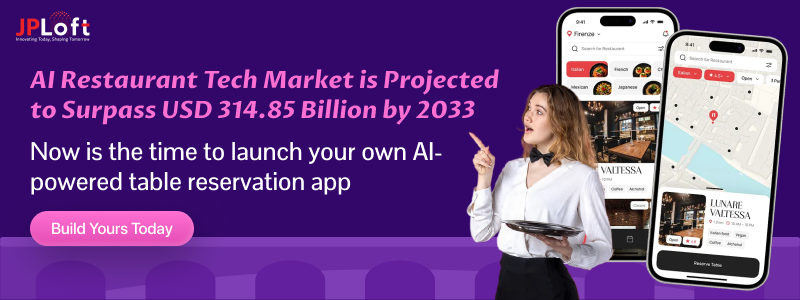
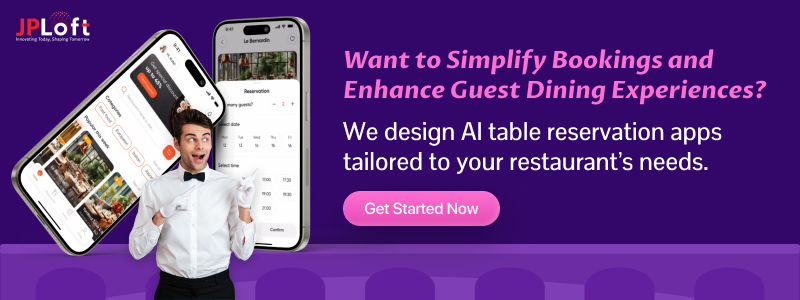

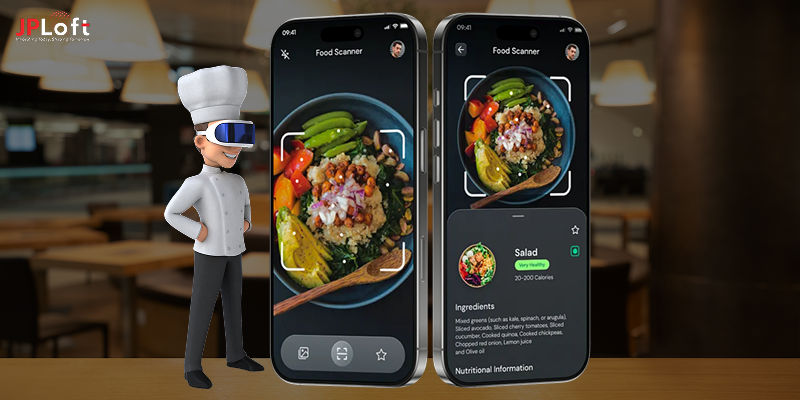
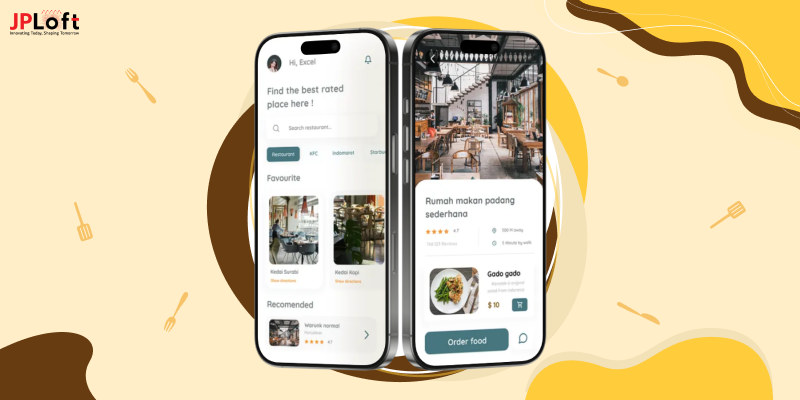
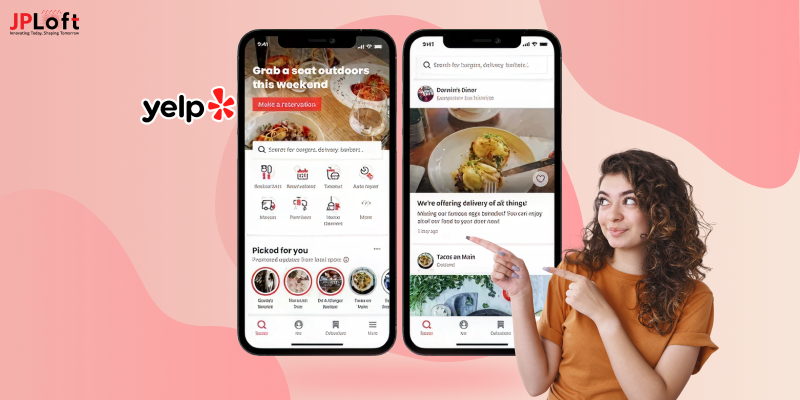


Share this blog